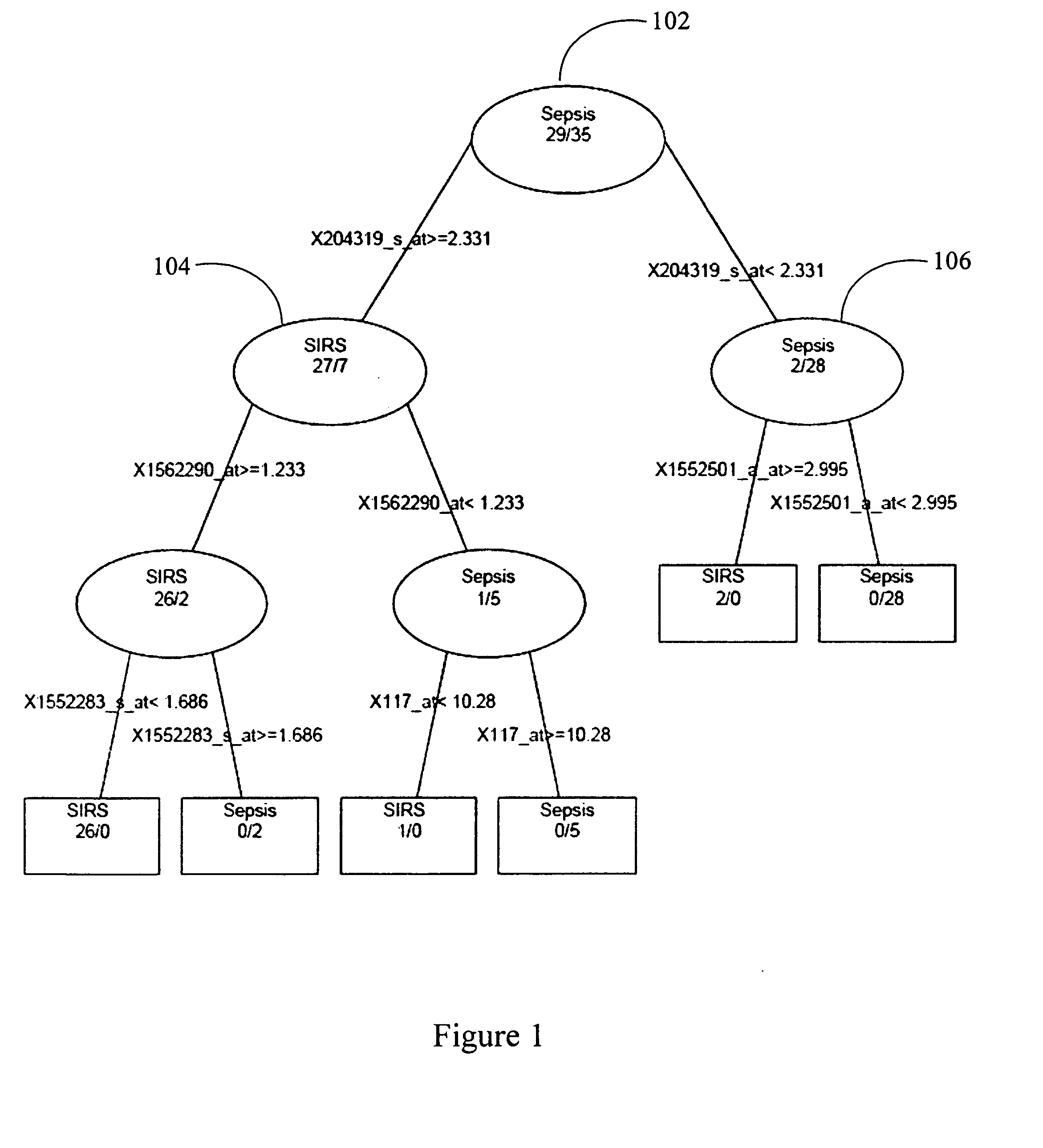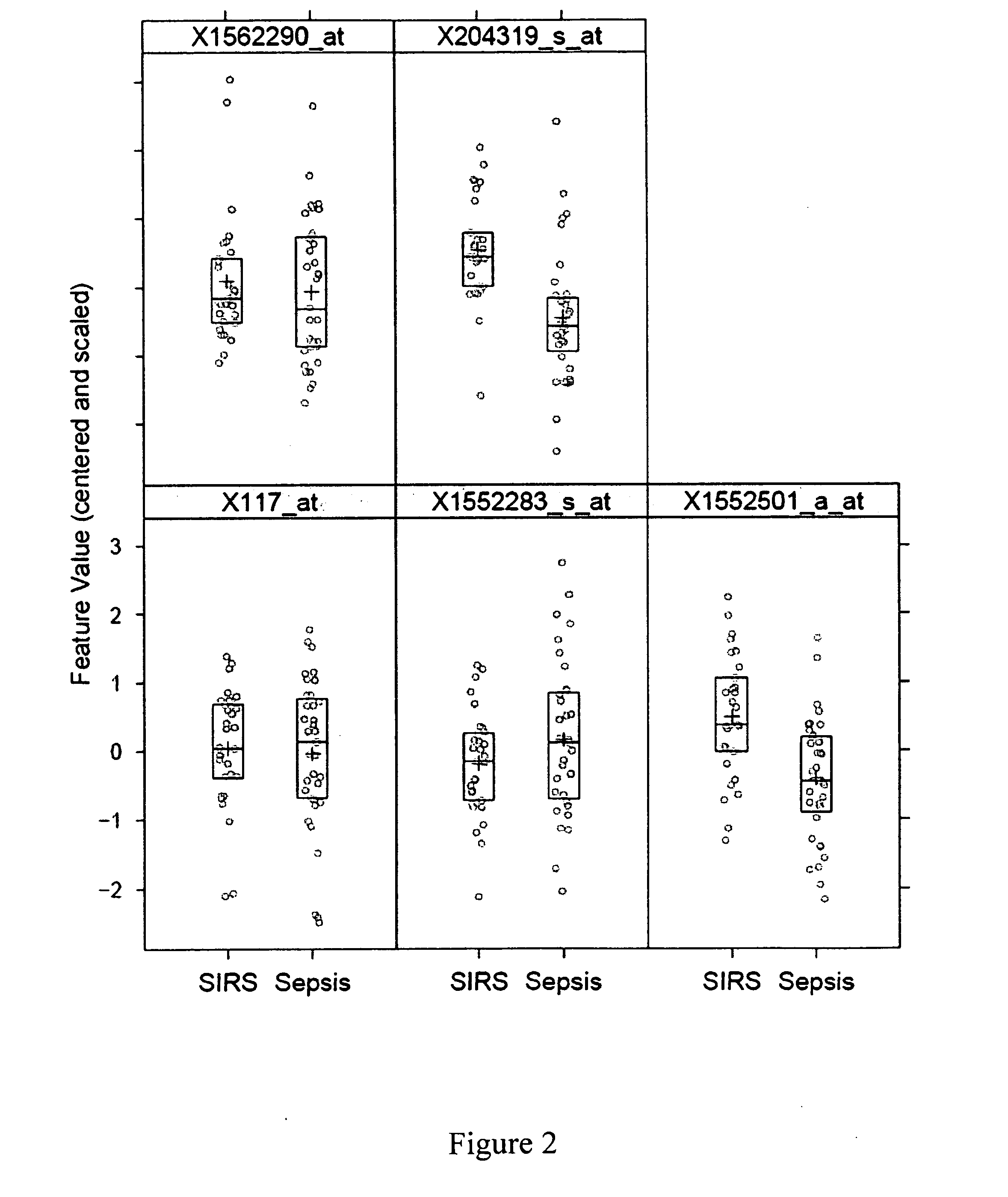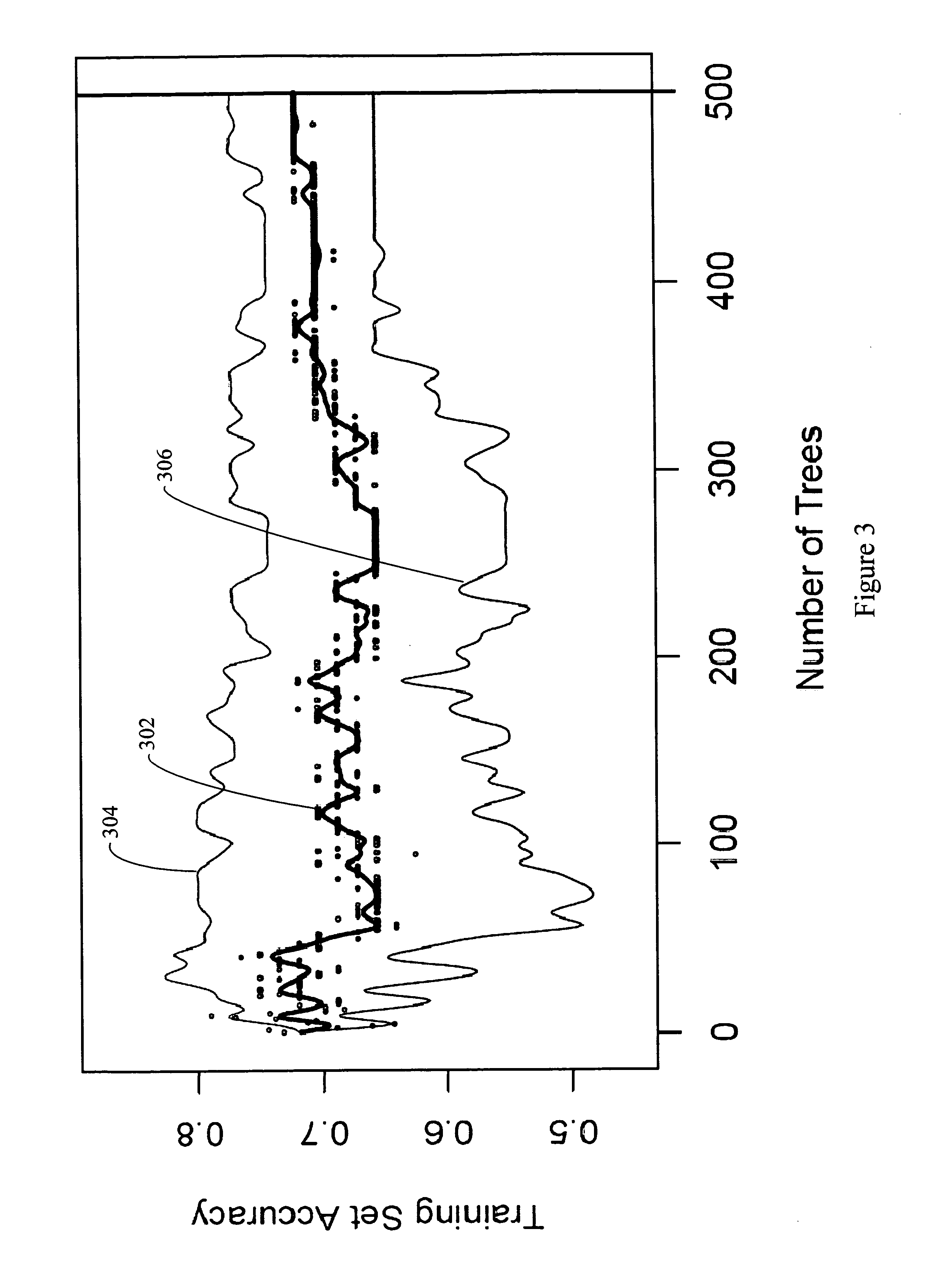Diagnosis of sepsis
a sepsis and sepsis technology, applied in the field of sepsis diagnosis, can solve the problems of complex host response during the systemic inflammatory response, early detection of disease symptoms, and relatively advanced disease,
- Summary
- Abstract
- Description
- Claims
- Application Information
AI Technical Summary
Benefits of technology
Problems solved by technology
Method used
Image
Examples
Embodiment Construction
[0103] The present invention allows for the rapid and accurate diagnosis or prediction of sepsis by evaluating biomarker features in biomarker profiles. These biomarker profiles can be constructed from one or more biological samples of subjects at a single time point (“snapshot”), or multiple such time points, during the course of time the subject is at risk for developing sepsis. Advantageously, sepsis can be diagnosed or predicted prior to the onset of conventional clinical sepsis symptoms, thereby allowing for more effective therapeutic intervention.
5.1 Definitions
[0104]“Systemic inflammatory response syndrome,” or “SIRS,” refers to a clinical response to a variety of severe clinical insults, as manifested by two or more of the following conditions within a 24-hour period: [0105] body temperature greater than 38° C. (100.4° F.) or less than 36° C. (96.8° F.); [0106] heart rate (HR) greater than 90 beats / minute; [0107] respiratory rate (RR) greater than 20 breaths / minute, or PCO...
PUM
| Property | Measurement | Unit |
|---|---|---|
| Fraction | aaaaa | aaaaa |
| Fraction | aaaaa | aaaaa |
| Fraction | aaaaa | aaaaa |
Abstract
Description
Claims
Application Information
 Login to View More
Login to View More - R&D
- Intellectual Property
- Life Sciences
- Materials
- Tech Scout
- Unparalleled Data Quality
- Higher Quality Content
- 60% Fewer Hallucinations
Browse by: Latest US Patents, China's latest patents, Technical Efficacy Thesaurus, Application Domain, Technology Topic, Popular Technical Reports.
© 2025 PatSnap. All rights reserved.Legal|Privacy policy|Modern Slavery Act Transparency Statement|Sitemap|About US| Contact US: help@patsnap.com



